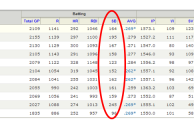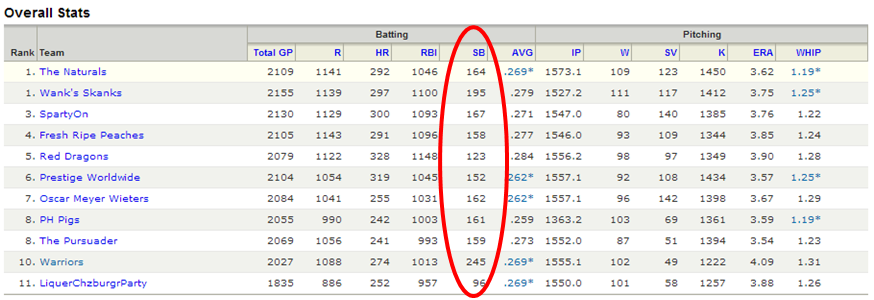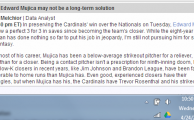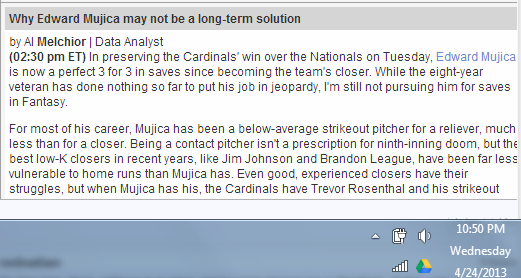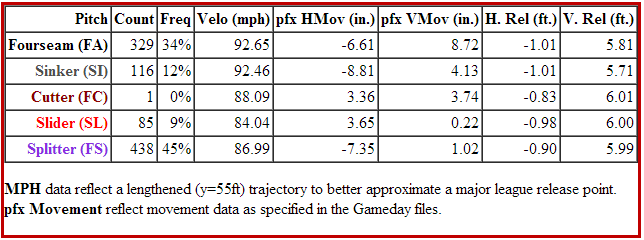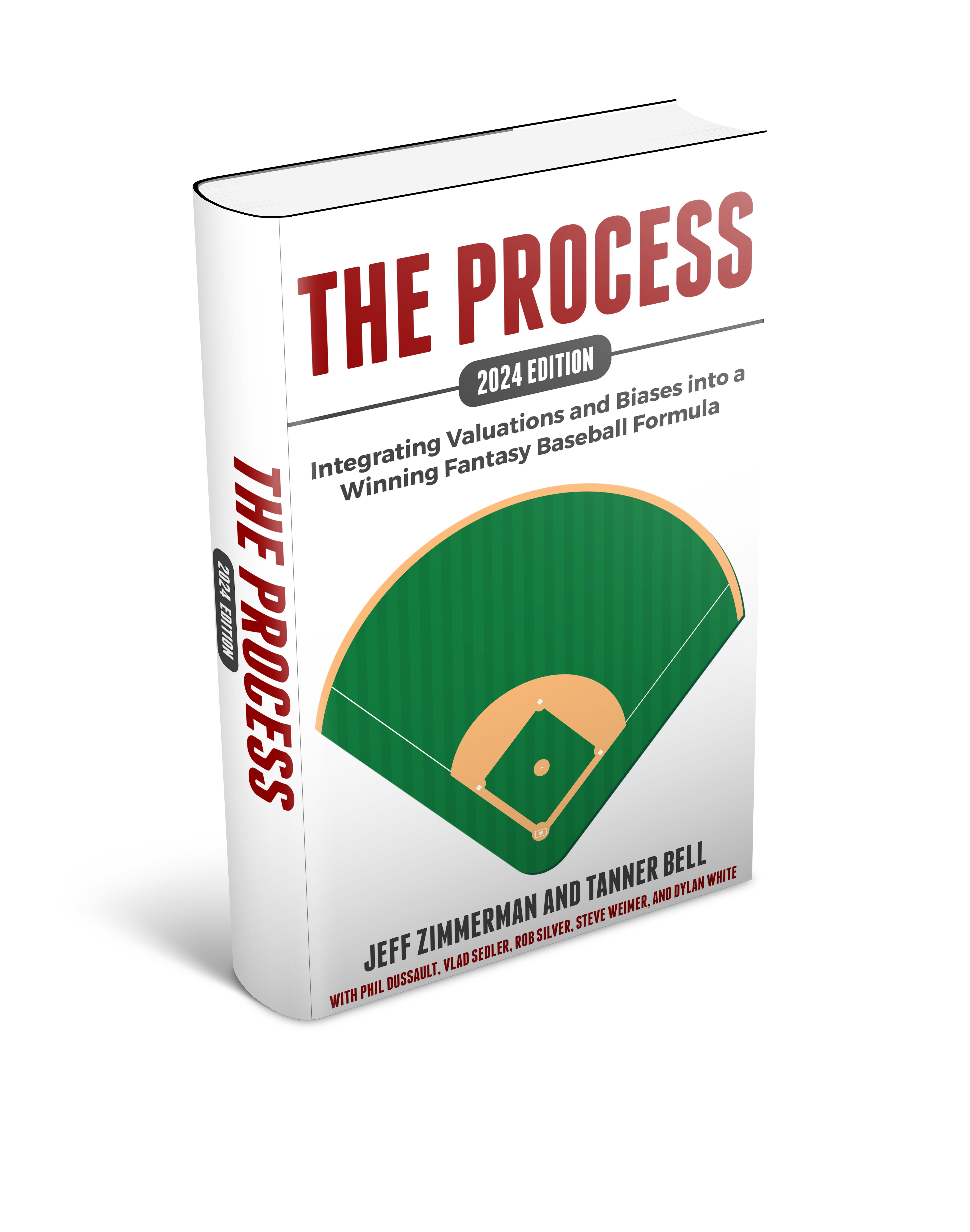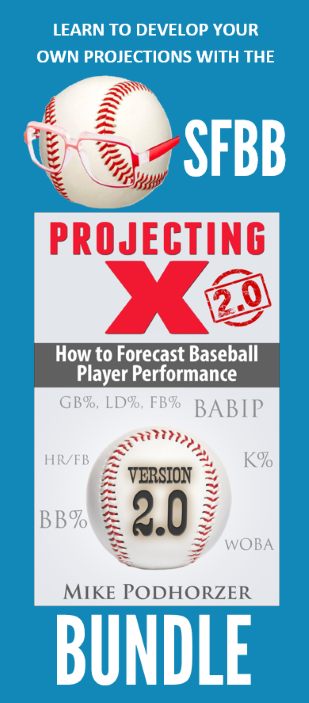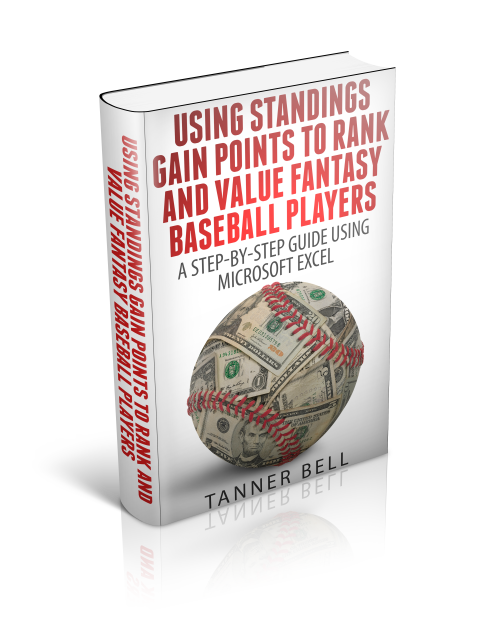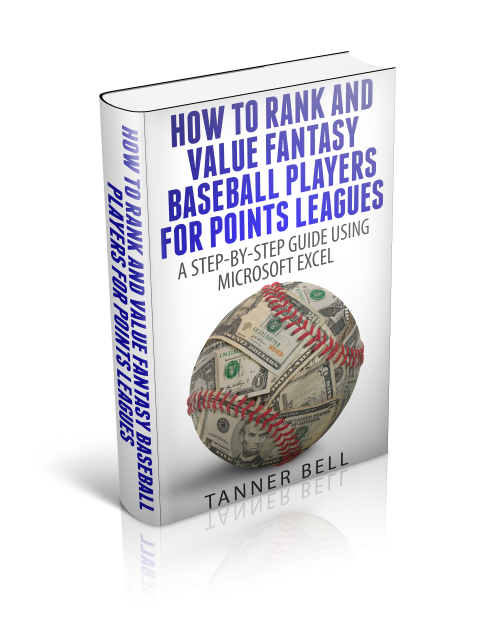Take a look at the final standings in one of my leagues last year:
Note the tie for first place. And then note the closeness amongst the teams in stolen bases. Teams finished with 158, 159, 161, 162, 164, and 167. If the team at 158 could have squeaked out 10 extra steals, they could have conceivably earned five extra points in the standings.
In this edition of Smart Elsewhere, Brett Talley (follow Brett on Twitter), a writer for the Rotographs pages of Fangraphs, takes a look at an approach you can use to try to squeak out 10 extra steals over the course of the year in his article, “Pitchers and Catchers to Exploit, Avoid When Chasing Steals”
The article identifies pitchers, with more than 100 IP the last two seasons, that are most/least successfully stolen on (both a measure of frequency of steals and successful steal attempts). The article then goes on to identify catchers with over 1,000 innings caught the last three years and the highest/lowest caught stealing percentages.
I like the applicability of this in both season-long rotisserie leagues allowing daily transactions and weekly head-to-head rotisserie leagues. I’m not suggesting it’s necessary to check this list daily and start “streaming” base stealers against pitchers, but I see it as a way to squeak out a few extra steals over the course of the season or in a weekly head-to-head match up.
You can look up 2013 stolen base and caught stealing data by catchers on Fangraphs here or at Baseball Reference here. And the stolen bases attempted and allowed by pitchers on Fangraphs here or at Baseball Reference here (Baseball Reference has information on stolen bases and caught stealing by pitcher, I can only find stolen bases on Fangraphs).
As an example of how to implement this, let’s say you have a decent base stealer on your team but on a typical day he doesn’t crack your starting line up. He’s mostly sitting on the bench for depth. But then you notice he’s got a match up against Edinson Volquez (7 SB allowed in 25 IP) and Nick Hundley (14 SB allowed in 19 G). You can put your base stealer in the lineup and take out someone facing a difficult opposing pitcher. Or vice versa, if you have a stolen base specialist that usually is in the lineup, but is going against Johnny Cueto (whom Talley shows as the hardest pitcher to run in by a long shot), maybe you consider taking him out for the night and putting in a bench player with a game in Coors Field.
Updated tables for the current season, through April 29th, are below.
Want more tips and strategy advice like this? Please click the follow button below. Make smart choices.
Follow @smartfantasybb
| Rk | Player | Tm | G | Inn | SB ▾ | CS | CS% |
|---|---|---|---|---|---|---|---|
| 1 | Roberto Hernandez | TBR | 5 | 30.2 | 7 | 0 | 0% |
| 2 | Edinson Volquez | SDP | 5 | 25.1 | 7 | 1 | 13% |
| 3 | Clay Buchholz | BOS | 5 | 37.2 | 6 | 0 | 0% |
| 4 | A.J. Burnett | PIT | 6 | 35.0 | 6 | 0 | 0% |
| 5 | Cole Hamels | PHI | 6 | 37.2 | 6 | 2 | 25% |
| 6 | David Price | TBR | 6 | 38.0 | 6 | 2 | 25% |
| 7 | Chris Resop | OAK | 13 | 11.0 | 6 | 0 | 0% |
| 8 | Scott Feldman | CHC | 4 | 20.2 | 5 | 0 | 0% |
| 9 | Brad Peacock | HOU | 5 | 21.1 | 5 | 0 | 0% |
| 10 | Julio Teheran | ATL | 4 | 23.0 | 5 | 0 | 0% |
| 11 | Blake Beavan | SEA | 6 | 18.1 | 4 | 1 | 20% |
| 12 | Joe Blanton | LAA | 5 | 26.2 | 4 | 0 | 0% |
| 13 | Edwin Jackson | CHC | 5 | 28.1 | 4 | 0 | 0% |
| 14 | Tim Lincecum | SFG | 5 | 29.2 | 4 | 0 | 0% |
| 15 | Zach McAllister | CLE | 4 | 23.0 | 4 | 0 | 0% |
| 16 | Chris Sale | CHW | 5 | 33.0 | 4 | 0 | 0% |
| 17 | Evan Scribner | OAK | 8 | 12.2 | 4 | 0 | 0% |
| 18 | Jamey Wright | TBR | 10 | 10.1 | 4 | 0 | 0% |
| 19 | Dylan Axelrod | CHW | 5 | 27.1 | 3 | 3 | 50% |
| 20 | Josh Beckett | LAD | 5 | 30.1 | 3 | 1 | 25% |
| Rk | Tm | G | Inn | SB ▾ | CS | CS% | |
|---|---|---|---|---|---|---|---|
| 1 | Tyler Flowers | CHW | 20 | 170.0 | 16 | 3 | 16% |
| 2 | J.P. Arencibia | TOR | 22 | 191.0 | 15 | 2 | 12% |
| 3 | Welington Castillo | CHC | 19 | 163.0 | 14 | 7 | 33% |
| 4 | Nick Hundley | SDP | 19 | 166.1 | 14 | 4 | 22% |
| 5 | Chris Iannetta | LAA | 20 | 171.1 | 13 | 1 | 7% |
| 6 | Jose Molina | TBR | 19 | 129.1 | 13 | 4 | 24% |
| 7 | Carlos Santana | CLE | 15 | 123.1 | 13 | 2 | 13% |
| 8 | Alex Avila | DET | 17 | 151.2 | 12 | 4 | 25% |
| 9 | Jason Castro | HOU | 20 | 162.2 | 12 | 3 | 20% |
| 10 | John Jaso | OAK | 16 | 127.0 | 11 | 2 | 15% |
| 11 | Russell Martin | PIT | 22 | 178.0 | 11 | 6 | 35% |
| 12 | Buster Posey | SFG | 22 | 179.2 | 11 | 5 | 31% |
| 13 | Jarrod Saltalamacchia | BOS | 17 | 144.0 | 11 | 0 | 0% |
| 14 | Gerald Laird | ATL | 8 | 69.0 | 10 | 1 | 9% |
| 15 | Jose Lobaton | TBR | 13 | 89.1 | 10 | 1 | 9% |
| 16 | Jesus Montero | SEA | 14 | 128.1 | 10 | 0 | 0% |
| 17 | A.J. Ellis | LAD | 19 | 167.2 | 9 | 8 | 47% |
| 18 | Salvador Perez | KCR | 21 | 174.2 | 9 | 3 | 25% |
| 19 | John Buck | NYM | 22 | 178.2 | 8 | 5 | 38% |
| 20 | Erik Kratz | PHI | 21 | 161.1 | 8 | 4 | 33% |
| 21 | Yadier Molina | STL | 23 | 209.1 | 8 | 3 | 27% |
| 22 | Dioner Navarro | CHC | 6 | 50.0 | 8 | 3 | 27% |
| 23 | Derek Norris | OAK | 14 | 104.0 | 7 | 0 | 0% |
| 24 | David Ross | BOS | 9 | 79.0 | 7 | 3 | 30% |
| 25 | Kurt Suzuki | WSN | 19 | 159.0 | 7 | 2 | 22% |

